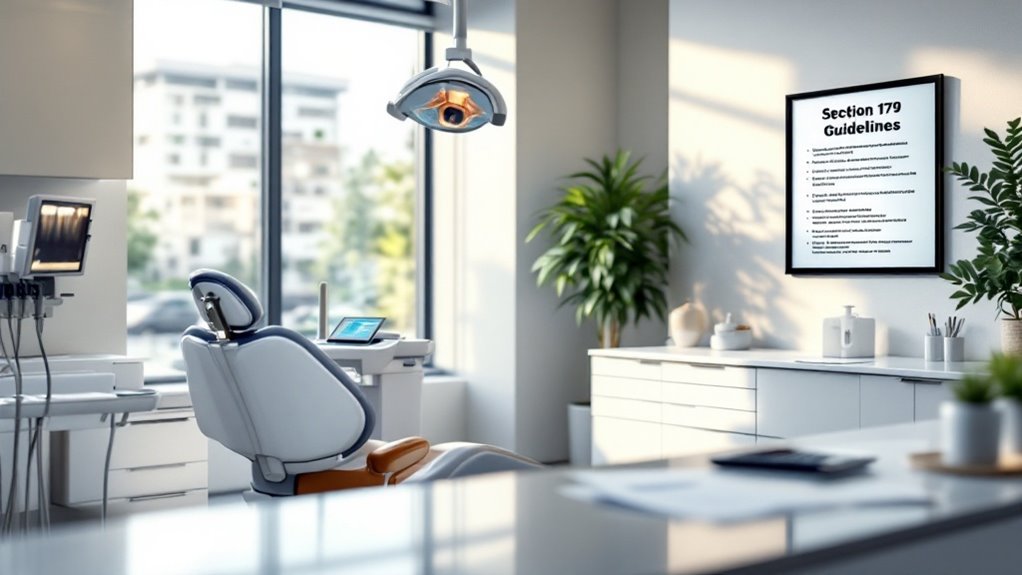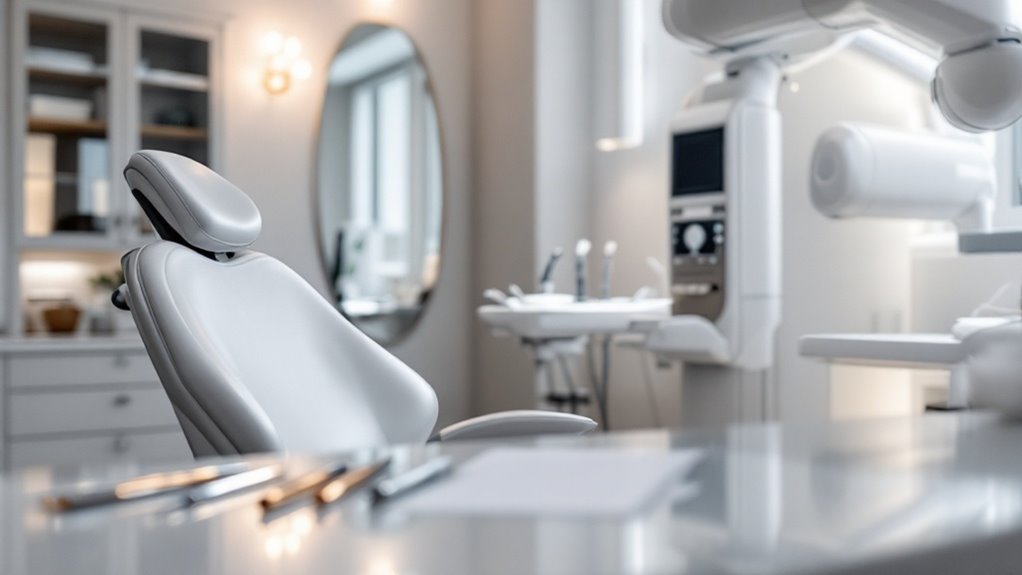When it comes to managing your dental practice's finances, understanding tax deduction strategies for equipment can greatly impact your bottom line. You might want to contemplate leveraging the Section 179 deduction for immediate write-offs, exploring the benefits of bonus depreciation, and ensuring your documentation is in order for maximizing the Qualified Business Income deduction. Each of these strategies offers unique advantages that could save you thousands. But how do you effectively implement these strategies without overwhelming yourself? Let's examine each option to see how they can work for you.
Key Takeaways
- Utilize Section 179 to deduct the full purchase price of qualifying dental equipment up to $1,160,000, ensuring it's used over 50% for business.
- Take advantage of bonus depreciation for 2023, allowing 80% deduction on eligible new and used dental equipment without a spending cap.
- Maximize your Qualified Business Income (QBI) deduction by keeping taxable income below $364,200 for married couples or $182,100 for singles.
- Combine Section 179 and bonus depreciation strategies for enhanced tax benefits on dental equipment investments, especially for high-value assets.
- Consult with tax professionals to tailor strategies for equipment purchases and stay updated on tax law changes for optimal savings.
Understanding Section 179 Deduction

Understanding the Section 179 Deduction can greatly benefit your dental practice. This tax deduction allows you to fully deduct the cost of qualifying equipment purchases, up to $1,160,000 in 2023.
By purchasing dental equipment like chairs and X-ray machines, you can enhance patient care while reducing your tax liability. Remember, to qualify, the equipment must be used at least 50% for business and placed into service by December 31, 2023.
If an asset is used 70% for business, only 70% of its cost is deductible. This immediate expensing promotes better tax planning, allowing you to sidestep lengthy depreciation schedules.
Exploring Bonus Depreciation Options
While the Section 179 Deduction offers significant tax benefits for dental practices, bonus depreciation presents another strong tool for maximizing your tax savings.
This option allows you to deduct 100% of the cost of eligible new and used equipment in the year it's placed in service, providing immediate relief. In 2023, the bonus depreciation rate is 80%, gradually phasing out in future years.
Unlike Section 179, there's no spending cap, making it ideal for larger practices investing heavily in equipment. Bonus depreciation applies to various assets, including dental chairs and X-ray machines.
You can even combine it with Section 179 deductions, further enhancing your tax deductions. It's a smart move for any professional looking to optimize their tax benefits.
Maximizing Qualified Business Income Deduction

To maximize your Qualified Business Income (QBI) deduction, you'll want to keep a close eye on your practice's taxable income and expenses.
For dental practices, this deduction can be up to 20% of your qualified business income, which greatly reduces your taxable income. However, make sure your taxable income stays below $364,200 for married couples or $182,100 for singles to qualify fully.
Managing your income is vital, especially since phased deductions kick in for earnings above $340,100 or $170,050.
Work with a tax professional to document all business expenses meticulously. Detailed records will help you optimize your deduction by accounting for necessary equipment and technology, ultimately maximizing tax savings on your tax return.
Frequently Asked Questions
How Do I Deduct Dental Expenses on My Taxes?
To deduct dental expenses on your taxes, track your dental office expenses carefully. Use itemized deductions for tax deductible expenses, follow IRS guidelines, and explore self-employed deductions and healthcare tax credits for effective tax planning strategies.
How Do I Write off Equipment on My Taxes?
To write off equipment, track business expenses, assess asset management, and follow IRS guidelines. Utilize tax strategies like equipment depreciation and tax credits, ensuring accurate expense tracking for effective financial planning in your dental practice.
How Many Years to Depreciate Dental Equipment?
When you depreciate dental equipment, the typical useful life is 5 to 7 years, depending on asset classification. Understanding tax regulations helps you maximize deductible costs and enhance financial planning through effective accounting methods and equipment valuation.
Which Dental Equipment Is Considered a Major Purchase?
When you consider major equipment types, think dental chairs, X-ray machines, and surgical instruments. Equipment lifespan, financing, and maintenance costs can impact your decisions, along with warranties and technology upgrades when purchasing new or used equipment.
Conclusion
By leveraging Section 179, bonus depreciation, and the Qualified Business Income deduction, you can convert your dental equipment purchases into significant tax savings, much like turning a small investment into a flourishing garden. These strategies not only lighten your tax burden but also help your practice thrive financially. So, take action today—stay informed, keep detailed records, and watch your savings grow as you optimize your tax position for a brighter, more prosperous future.


